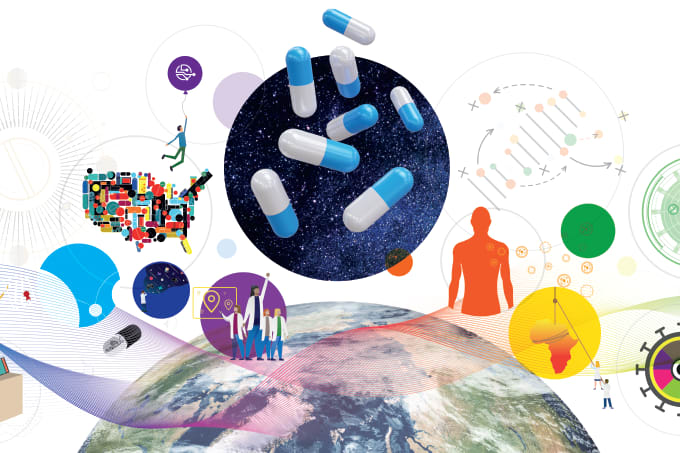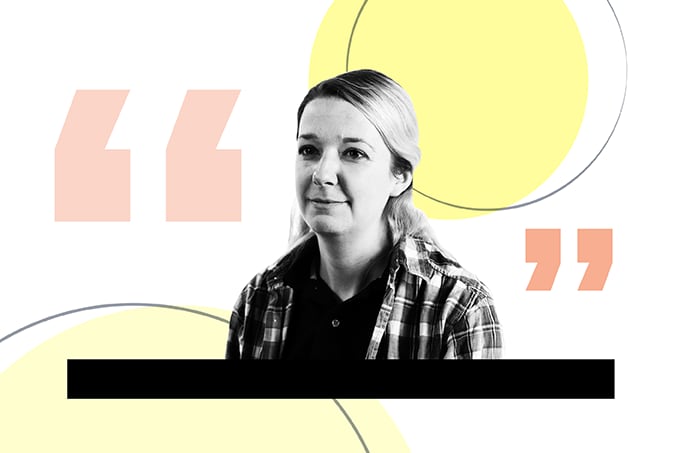
It is no secret that access to cell and gene therapies (CGTs) has been hampered by our industry’s inability to scale them, despite the rapid evolution and maturation of the space. Because the traditional large-batch pharma model doesn’t apply here, particularly with autologous cell therapies, innovators have been seeking novel ways to address these challenges. Many recognize that the strategic application of technology lies at the heart of addressing these complexities, particularly the discerning use of automation and AI within the networks that underpin advanced therapy production.
To understand the promise and limitations of these technologies, a nuanced understanding of AI technology is required to realize the promise it will have on CGT production. Automation streamlines processes with human oversight, ideally leading to increased precision and efficiency, as well as freeing up skilled staff to focus on more interesting scientific challenges. It can shift the workload balance from “doing” to “thinking”, reducing the reliance on certain mechanical skill sets in the lab. This transition not only enhances laboratory operations – it significantly reduces variability and brings the performance of a highly skilled "superuser" within reach for a broader range of practitioners.
A crucial distinction exists between automation and AI: AI's true power lies in its ability to define optimal steps for specific contexts. It shifts the workloads even further towards higher-level analytical thinking and away from mechanical execution. The trajectory of AI in CGT points towards predictive capabilities, particularly in the realm of personalized medicine.
Leveraging AI
Throughout my career, I’ve watched the daydream of targeted therapies increasingly become a reality. Early experiences with some products show modest general efficacy, but with incredible responses in certain populations. Precision testing has now helped the vision of personalized medicine drive the development of targeted therapies from Gleevec to Keytruda. The long-held aspiration of identifying patients most likely to respond to a given therapy, and understanding the “why?”, is now becoming tangible.
That level of specificity is needed across the entire "vein-to-vein" continuum in CGT, and AI offers the opportunity to develop these kinds of individualized approaches. We need to leverage predictive AI to answer critical questions, such as: What characteristics make a patient or donor ideal for a specific modality or manufacturing process? Will a patient benefit more from frozen or fresh cellular material? What mix of T or NK cells makes the most sense for a particular patient's needs, and in what order?
We must integrate vast and diverse datasets to unlock this level of insight. Some of these include the detailed characterization of cellular starting material, comprehensive analytics at every processing and manufacturing step, and patient/donor characteristics beyond just cellular data. These include patient/donor health before and after materials are isolated, as well as lifestyle factors like exercise and sleep that could potentially influence the quality of the cells or therapeutic outcomes.
A further critical, yet often overlooked, challenge lies in the handoffs across the CGT supply chain. Many of the primary failures occur when therapies move between departments or separate organizations, where differences in processes, priorities, and communication create friction. Yet too little time, talent, and resources are devoted in optimizing these transitions. AI has the potential to change this by monitoring and improving handoffs, identifying bottlenecks, and providing upstream members with actionable feedback from downstream partners in a continuous process improvement loop. By creating a structured, data-driven feedback system, the entire network can learn and adapt, ultimately reducing errors, increasing efficiency, and improving patient outcomes.
Gathering the data
Much of that data exists today, but no single entity owns or controls it – let alone captures all the data they generate. The inherent complexity of advanced therapy patient and/or donor selection, manufacturing, and delivery involves a patchwork of players from step A to step Z, often from hospitals to external manufacturing sites and back with stops at third party contract sites along the way. Building robust collaborations is crucial to gather and integrate this extensive data into a system. The foundations of collaboration are mutual goals and visions, complementary areas of expertise and need, and the trust required that everyone will do what they say they will do while honoring commitments about how they do it. In this case, that means aligning on purpose and scope, committing to participate, and ensuring that data security and data rights are maintained while supporting the ability to interrogate the full longitudinal dataset necessary to provide meaningful insight.
Several AI-focused tool developers are creating segregated "sandbox” environments, where various collaborators (blood centers, hospitals, biotechs, and pharmaceutical companies) can contribute their data. In this type of approach, data segregation protects specific intellectual property, yet all participants would have access to the collective learnings generated from the continuum of the data.
Blood and biologics networks occupy a unique position in that there are multiple, integrated locations, as well as existing relationships with hospitals and drug developers. It is incumbent on all of us to look clearly at the potential and the role of AI to help us develop the insights that will enable the right product to the right patient at the right time in the right place.
Assembling the pieces
Much of the infrastructure supporting such a technological leap is present, if not universally evident. Blood center networks are proving to be critical partners in this regard, due in part to a deep understanding of the CGT vein-to-vein model, honed over decades in areas like red blood cell research and infectious disease in blood products. They also enjoy existing access to patient and donor data, as well as experience with patient selection. Because many are also providing early processing capabilities, cryopreservation, and other relevant services, blood center networks are positioned to generate and share data on other key manufacturing steps as well.
Beyond data sourcing, they tend to have a practical position that can enable the kind of data sharing that is needed. In many cases, they already have existing relationships with other key stakeholders, including hospitals and biopharma companies. Networks of blood centers often have apheresis staff in hospitals and a presence extending deep into communities. Furthermore, their not-for-profit status can foster a less threatening collaborative environment for both pharmaceutical companies and hospitals, emphasizing support without fear of competition for patients. And, due to the history of blood collection and distribution, they have complex logistics capabilities across the country and beyond, operating within a “network of networks” such as for disaster response.
To realize the full potential of advanced therapies, the industry must move beyond isolated innovation and embrace strategic collaboration powered by AI. Blood centers, hospitals, biopharma companies, and technology developers all have pieces of the puzzle, but only by connecting these pieces can we achieve truly personalized, scalable treatments. The call is clear: invest in partnerships, share insights responsibly, and harness AI to transform data into actionable intelligence.




